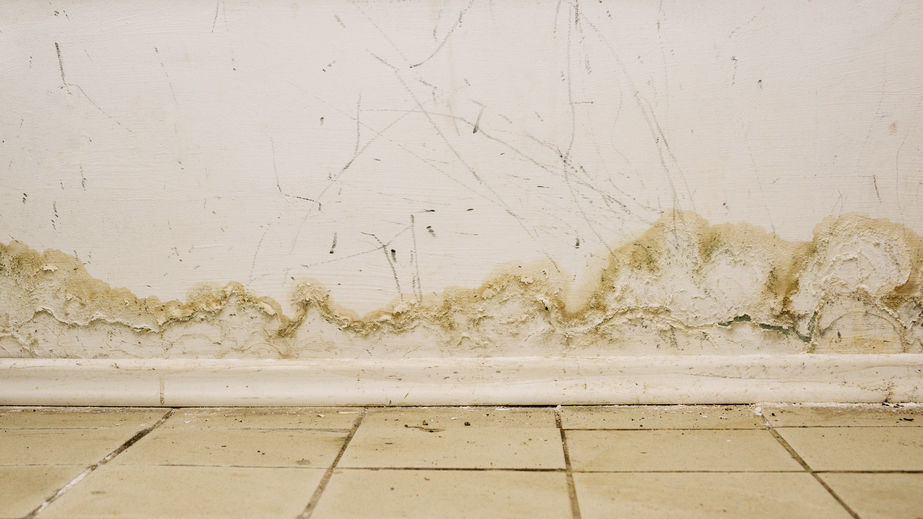 Mold tends to grow in a wet and damp environment, which is prevalent in areas that are frequently flooded. If stagnant water is allowed to stay in your home for a while, it starts to sink into the building materials causing extensive damage to property. The structural integrity of the building may be compromised by constant moisture that has been lingering in your home for days. Mold invasion is one of the common consequences of water damage caused by floods.
Mold tends to grow in a wet and damp environment, which is prevalent in areas that are frequently flooded. If stagnant water is allowed to stay in your home for a while, it starts to sink into the building materials causing extensive damage to property. The structural integrity of the building may be compromised by constant moisture that has been lingering in your home for days. Mold invasion is one of the common consequences of water damage caused by floods.
As long as the level of moisture in your home is still high, mold will continue to grow and spread within a few days of water exposure. It is always important to address the water problem as soon as possible to avoid unnecessary repairs or costly replacements. In this article, we will be discussing five precautionary measures to prevent mold for frequently flooded areas.
- Dry Out Your Home After Floods
Mold spores thrive well in an environment with constant moisture. If you have encountered floods in your area, you need to dry out your home completely to prevent mold contamination. If the weather permits, you can open your doors and windows to facilitate free flow of clean air throughout the vicinity. Drying out your home as soon as possible can prevent mold from growing at all. This is because you will have eradicated the conditions necessary for growth and existence. Use other equipment such as fans, heaters, and dehumidifiers to reduce the level of moisture and humidity in your house.
- Get Rid of Flooded or Moldy Items
It is important that you discard porous materials that have been affected by flooded water. Mold can easily grow on porous surfaces such as fabrics, drywall, carpeting, and clothing. Mold spores multiply in a frenzy because organic substances nourish mold when combined with the presence of moisture. Discarding porous materials that were exposed to moisture is one of the necessary steps you must take for mold prevention. Carpets retain living mold spores even if they were dried out completely. Any items that emit moldy odors need to be tossed including rugs, books, papers, and food items.
- Mold Proofing
Basement flooding is one of the biggest causes of mold. When you do not get rid of flooded water, it starts to sink into the building materials and runs down to the basement causing significant damage to your property. Mold proofing starts with addressing areas in your home that can cause water leakages inside the house or basement. You can make this work by installing an exterior drainage system. A French drain installed around your home helps protect the foundation by relieving hydrostatic pressure and acting as a water barrier. Any cracks on your walls need to be sealed up using a waterproof filler. All these additions are necessary to prevent mold invasion in homes that experience frequent floods.
- Inspect Your Roof
Mold growing on the ceiling or the attic is often caused by a leak in the roof. Once mold starts to grow on your ceiling, you may be forced to replace your ceiling tiles, drywalls, and insulation. This is because you will have encountered significant damage by the time you realize the leak or mold problem in your roof. The condition may worsen during heavy rains if nothing is done to repair the roof in time. Check your roof for any signs of leaks and repair them as soon as possible to avoid unnecessary maintenance costs in the future. Downspouts are ideal gutter extensions that can guide water farther from your house.
- Reshaping your Landscape
Flooded water can remain stagnant around your house if the siding of your home overlaps its foundation. Not only does it lead to mold infestation but also causes significant damage to property when water runs down to your basement. You can create landscape features such as a mound of dirt or a wide shallow ditch to redirect water away from your house during heavy rains. If you have no idea of the best way to reshape your landscape, you can always hire a contractor to create an attractive and permanent structure based on your specifications.
Flooding is a natural phenomenon that cannot be avoided but you can always take precautionary measures to prevent mold damage to property. Before you start mold proofing or reshaping your landscape, it is important to dry out your home completely and inspect for any signs of mold. Discard porous materials such as drywall, carpets and other moldy items affected by floods. Non-porous household items need to be sanitized to get rid of mold completely. It is important to perform a mold inspection if you start noticing any signs of mold in your house.
